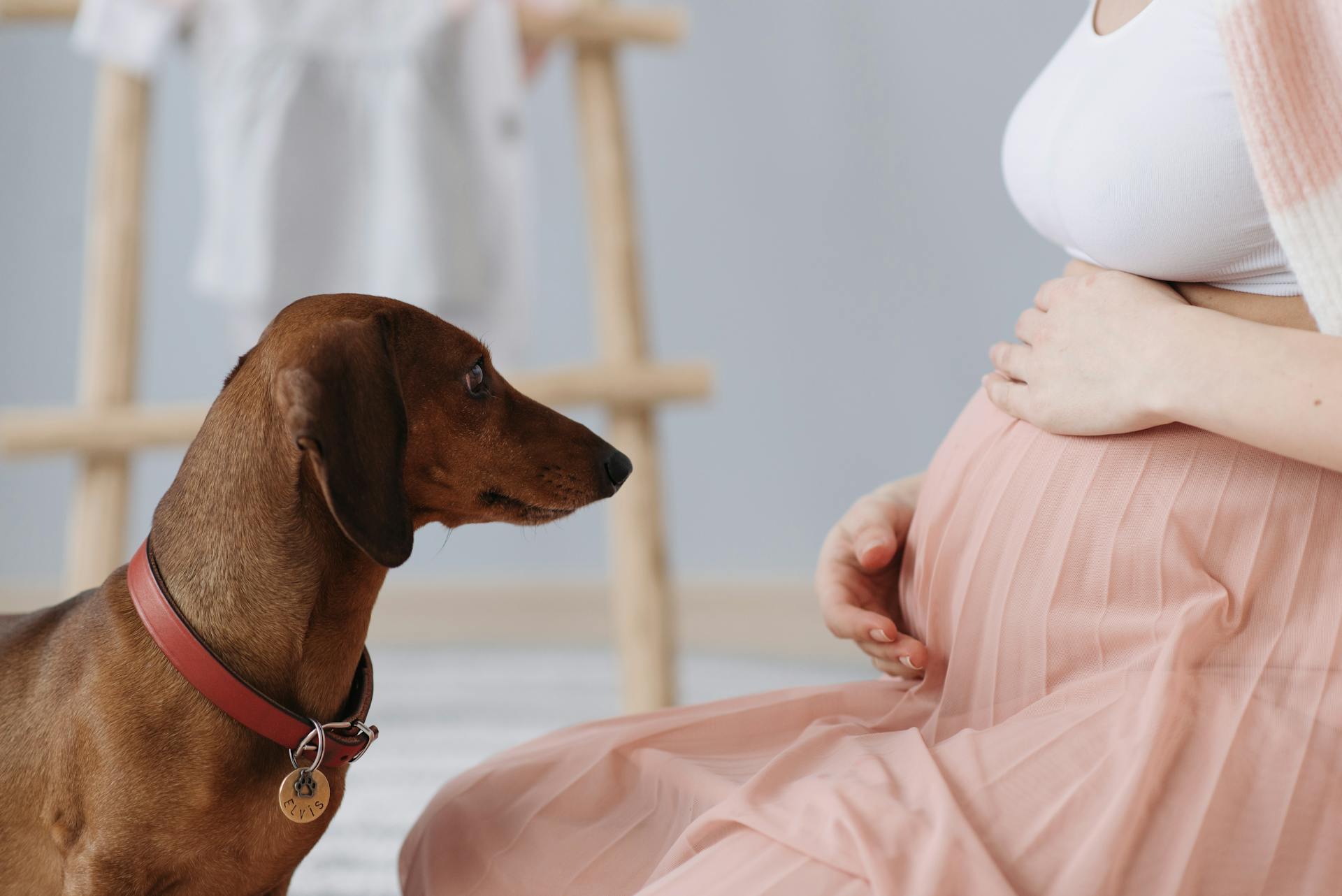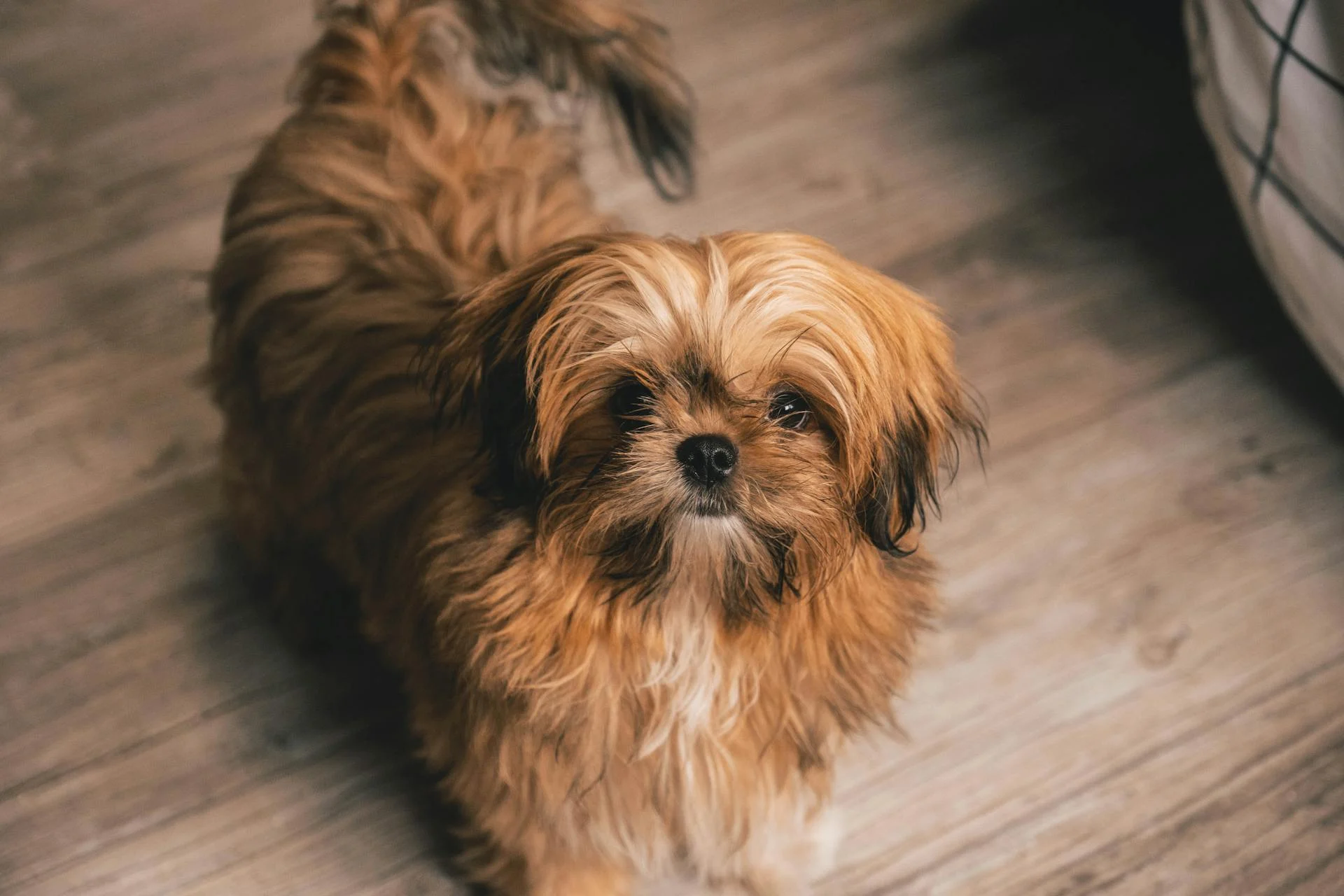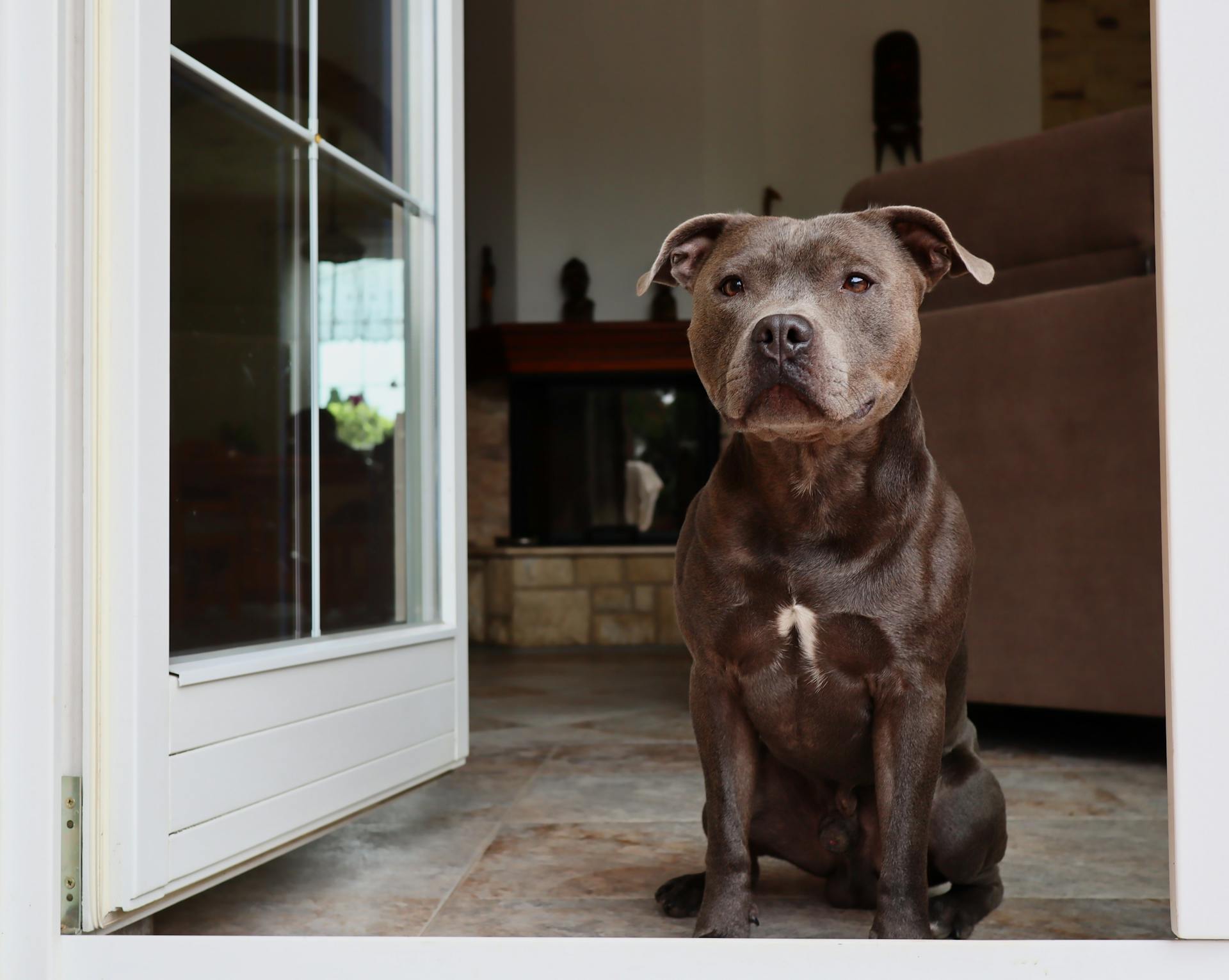
Belly rubs are a universal language that pets understand, and they can bring immense joy to both you and your furry friend.
Prolonged belly rubs can lead to a state of deep relaxation in pets, reducing stress and anxiety.
Some pets may exhibit a "supine position", where they roll onto their backs, exposing their bellies, indicating a desire for a belly rub.
Research suggests that pets associate belly rubs with feelings of comfort and contentment, making them a great way to strengthen the bond between you and your pet.
See what others are reading: Priceless Pets Adoptable Dogs
Cats' Belly Rub Behavior
Cats show their belly as a form of positive body language, indicating they're comfortable with interaction.
Unless your cat is extremely sensitive, they usually tolerate belly rubs, but some may retaliate or attack you playfully.
Cats may expose their belly to initiate play, with your hand being the "prey" in their imagination.
Some cats love belly rubs because it mimics the hunt that wild cats endure for prey, while others do it because it's comforting for their itchy or dry skin.
If your cat is showing their belly, it's essential to respect their boundaries and not touch them if they're not in the mood.
Cats Show Their Affection
Cats show their affection in various ways, including rolling over to expose their belly, which is a form of positive body language indicating comfort with interaction.
Some cats may tolerate belly rubs for a while before playfully attacking your hand or showing disapproval by moving away.
If your cat exposes their belly and doesn't retaliate, it's likely a sign of affection and a desire for interaction.
However, every cat is different, and some may not enjoy belly rubs at all.
Cats that are stressed or distressed may roll over and expose their belly as a way to lure a perceived threat close enough to attack.
You can identify stressed cats by watching out for other cues, such as the position of their ears, tail, and movement of the tail.
Some cats may love belly rubs because they're a way to mimic the hunt and playtime that's crucial for their well-being.
Other cats may simply find belly rubs comforting, especially if they have allergies or dry skin.
But be aware that not all cats take kindly to belly rubs, and some may even bite or scratch when offered one.
If your cat loves you but hates belly rubs, it's likely because they're practicing their hunting skills or are too ticklish or uncomfortable with having their bellies rubbed.
Asking for Rubs
Cats will often expose their belly as a form of positive body language, indicating they're comfortable with interaction.
If your cat shows their belly, it's likely they're ready for some affection, but be cautious not to pet them in a way that makes them nervous.
Dogs, on the other hand, roll on their back for two main reasons: as a display of appeasement and as a request for a belly rub.
Dogs who actually want belly rubs will show loose and wiggly body language, a relaxed mouth, and open eyes.
A fresh viewpoint: Shiba Inu 1 Dollar
Cats may also expose their belly as a way to initiate play, treating your hand as the prey.
If your cat enjoys belly rubs, they may be trying to mimic the hunt that wild cats endure for prey.
To determine if your cat wants belly rubs, look for loose body language, a relaxed mouth, and open eyes.
Here are some body language signals to look out for:
- Body is loose and wiggly
- Mouth is relaxed and open—you might see their tongue flopping around
- Eyes are open or squinty, bright and not necessarily staring at anything
- Tail is relaxed and may be wagging
- Vocalizations may occur, such as a "ha-ha" sound as they "laugh" or a light panting sound; silence is normal as well
Dogs Love Belly Rubs
Dogs love belly rubs, and it's not just because they're being playful or seeking attention. In fact, dogs roll on their backs and expose their bellies to us for two main reasons: as a display of appeasement, and as a request for a belly rub.
If your dog is adopting an appeasement gesture, it's trying to diffuse social tension by showing that they're not a threat. However, if you pet a dog who's showing submissive or appeasing behaviors, it can make them more nervous because you're touching them in very vulnerable parts of their body.
Dogs who actually want belly rubs will generally show specific body language signals. These include a loose and wiggly body, a relaxed and open mouth with the tongue flopping around, open or squinty eyes that are bright and not necessarily staring at anything, and a relaxed tail that may be wagging.
Some dogs even vocalize during belly rubs, making sounds like "ha-ha" or light panting. Silence is normal, and it's essential to respect your dog's wishes and pet them the way they'd like to be petted.
It's likely that dogs love belly rubs because it feels good to get rubs and scratches in a hard-to-reach area. Dogs can scratch their own shoulders, necks, and heads with their hind feet, but they really don't have a good way to scratch their own tummies.
To give a great belly rub to a dog, follow these basic steps:
- Watch to see if your dog is asking for a belly rub by checking their body language. If they don't seem to want a belly rub right now, don't push it.
- Kneel down and keep your body language loose and relaxed at first.
- Rub the belly with open-palmed, fingernails-in, circular, or patting motions. After three to five seconds, stop petting.
- See what your dog does next. If they paw at you, stay put, or otherwise show that they'd like more petting, go back in for more. If they get up and leave, belly rubs are over.
- Try changing up what sort of petting you use and see what different results you get.
The most important thing is to respect your dog's wishes and pet them the way they'd like to be petted. If you read your dog's body language, you will ensure your dog loves belly rubs even more than they already do!
On a similar theme: Why Are My Dog's Nails Splitting?
Petting and Rubbing Techniques
So you want to give your furry friend a good belly rub? First, make sure they're in the mood for it - if their body is loose and wiggly, it's a good sign.
Dogs who are relaxed and open to belly rubs will often display a relaxed mouth and tongue, and their eyes will be bright and not necessarily staring at anything. You might even hear a "ha-ha" sound as they "laugh" or a light panting sound.
For cats, showing their belly is a sign of comfort and positive body language. They may expose their belly and tolerate belly rubs for a while before either playing with your hand or moving away.
If your cat does show their belly, pay attention to their body language - if they start to playfully entrap your hand or move away, it's a sign that they're not as comfortable as you thought. But if they remain relaxed, go ahead and give them a good rub.
Here are some key signs to look out for when petting your dog or cat:
- Dogs: loose and wiggly body, relaxed mouth and tongue, bright and not staring eyes, relaxed tail, and vocalizations like a "ha-ha" sound
- Cats: exposed belly, relaxed body language, and tolerance of belly rubs
Sources
- https://www.catster.com/guides/do-cats-like-belly-rubs/
- https://www.thesprucepets.com/why-dogs-like-belly-rubs-4584399
- https://animals.howstuffworks.com/pets/dogs-cat-belly-rubs.htm
- https://www.whattoexpect.com/news/pregnancy/fetus-response-mother-rubbing-belly-study/
- https://www.akc.org/expert-advice/advice/dogs-like-belly-rubs/
Featured Images: pexels.com


